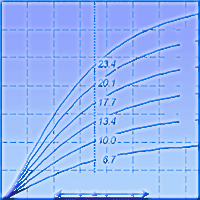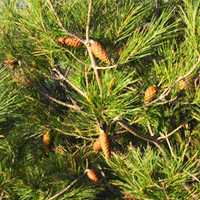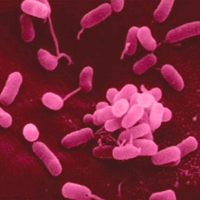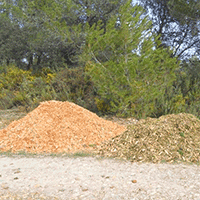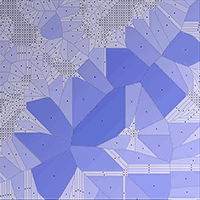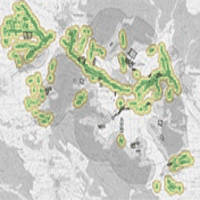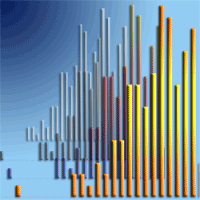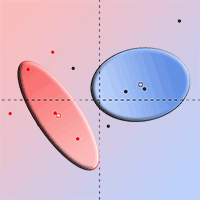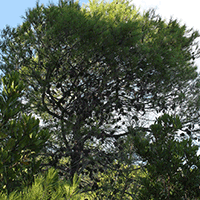
Biomass, radial growth and regeneration capacity of Aleppo pine, and its possible use as rootstock in arid and degraded areas
Kaouther Mechergui (1), Souheila Naghmouchi (1), Moodi Saham Alsubeie (2), Wahbi Jaouadi (1-3) , Youssef Ammari (1)
iForest - Biogeosciences and Forestry, Volume 15, Issue 3, Pages 213-219 (2022)
doi: https://doi.org/10.3832/ifor3954-015
Published: Jun 16, 2022 - Copyright © 2022 SISEF
Review Papers
Abstract
This paper reviews recent findings on Aleppo pine (Pinus halepensis Mill.), which is found throughout the Mediterranean region and has been introduced in several areas of the world. This species is used in reforestation efforts for timber production and protection of degraded areas. Several studies have shown that this species has high biomass productivity and high plasticity. Its radial growth is influenced by the climate and the physical environment. Aleppo pine is known for its great capacity for expansion in its natural environment and its great capacity for invasion in areas where it has been introduced worldwide. The use of P. halepensis Mill. as rootstock has yielded satisfactory resultsin the production of stone pine cones and nuts in marginalized, arid, and dry areas. This review can help forest managers developing optimal management strategies for Aleppo pine stands in arid and sub-arid Mediterranean regions.
Keywords
Pinus halepensis Mill., Biomass, Radial Growth, Regeneration, Grafting, Arid Land
Authors’ Info
Authors’ address
Souheila Naghmouchi 0000-0001-5093-810X
Wahbi Jaouadi
Youssef Ammari 0000-0003-3465-6748
Laboratory of Forest Ecology, National Research Institute of Rural Engineering, Water, and Forestry, University of Carthage. Street of Hedi Karay, BP no. 10, Ariana 2080 (Tunisia)
Biology Department, College of Science, Imam Mohammad Ibn Saud Islamic University (IMSIU), Riyadh 11623 (Saudi Arabia)
The Silvo-Pastoral Institute of Tabarka, BP no. 345, Tabarka 8110, Jendouba University (Tunisia)
Corresponding author
Paper Info
Citation
Mechergui K, Naghmouchi S, Alsubeie MS, Jaouadi W, Ammari Y (2022). Biomass, radial growth and regeneration capacity of Aleppo pine, and its possible use as rootstock in arid and degraded areas. iForest 15: 213-219. - doi: 10.3832/ifor3954-015
Academic Editor
Roberto Tognetti
Paper history
Received: Aug 22, 2021
Accepted: Jun 12, 2022
First online: Jun 16, 2022
Publication Date: Jun 30, 2022
Publication Time: 0.13 months
Copyright Information
© SISEF - The Italian Society of Silviculture and Forest Ecology 2022
Open Access
This article is distributed under the terms of the Creative Commons Attribution-Non Commercial 4.0 International (https://creativecommons.org/licenses/by-nc/4.0/), which permits unrestricted use, distribution, and reproduction in any medium, provided you give appropriate credit to the original author(s) and the source, provide a link to the Creative Commons license, and indicate if changes were made.
Web Metrics
Breakdown by View Type
Article Usage
Total Article Views: 32256
(from publication date up to now)
Breakdown by View Type
HTML Page Views: 26933
Abstract Page Views: 3023
PDF Downloads: 1847
Citation/Reference Downloads: 4
XML Downloads: 449
Web Metrics
Days since publication: 1299
Overall contacts: 32256
Avg. contacts per week: 173.82
Citation Metrics
Article Citations
Article citations are based on data periodically collected from the Clarivate Web of Science web site
(last update: Mar 2025)
Total number of cites (since 2022): 1
Average cites per year: 0.25
Publication Metrics
by Dimensions ©
Articles citing this article
List of the papers citing this article based on CrossRef Cited-by.
References
Réflexion sur le dynamisme actuel de la régénération du pin d’Alep dans les pinèdes incendiées en Provence [Reflection on the current dynamism of Aleppo pine regeneration in burnt pinewoods in Provence]. Ecologia Mediterranea 10 (4): 85-104. [in French]
CrossRef | Gscholar
Cone production of stone pine grafted onto Aleppo pine. In: Proceedings of the “Medpine5 - 5th International Conference on Mediterranean Pines”. Solsona (Spain) 2014. IRTA Institute of Agrifood Research and Technology, Spain, pp. 1.
Gscholar
Response of biomass allocation patterns to thinning in Pinus halepensis differs under dry and semi arid Mediterranean climates. Annals of Forest Science 72: 595-607.
CrossRef | Gscholar
Pines of the Mediterranean Basin. Ecology and Biogeography of Pinus. Cambridge University Press, Cambridge, UK, pp. 153-170.
Gscholar
Croissance en hauteur dominante et classes de fertilité du pin d’Alep (Pinus halepensis Mill.) dans le massif de Ouled Yakoub et des Beni Oudjana (Khenchela-Aures) [Dominant height growth and fertility classes of Aleppo pine (Pinus halepensis Mill.) in the massif of Ouled Yakoub and Beni Oudjana (Khenchela-Aures)]. Sciences and Technologie 23: 57-62. [in French]
Online | Gscholar
Economie forestière nord-africaine. II. Monographies et traitement des essences forestières [North African forestry economy. II. Monographs and treatment of forest species]. La Rose, Paris, France, pp. 887. [in French]
Gscholar
Guide du forestier en Afrique du nord [Guide for foresters in North Africa]. Ed. Maison Rustique, Paris, France, pp. 505. [in French]
Gscholar
Mediterranean pines (Pinus halepensis Mill. and P. brutia Ten.). In: “Forest Tree Breeding in Europe” (Paques L ed). Managing Forest Ecosystems, vol 25, Springer, Dordrecht, Netherlands, pp. 229-265.
Gscholar
Le pin d’Alep. Rencontres forestiers-chercheurs en forêt méditerranéenne [Aleppo pine. Meetings between foresters and researchers in Mediterranean forests]. La Grande Iviotte (34), 6-7 Oct 1993. INRA, Paris, France. Les colloques 63: 125-147. [in French]
Gscholar
Inventaire National Forestier de la Tunisie [National Forestry Inventory of Tunisia]. Inventaire des forêts par télédétection. Résultats du deuxième inventaire forestier et pastoral national, Direction Générale des Forêts, Tunisia, pp. 88. [in French]
Gscholar
Approche dendrochronologique de l’influence des changements climatiques sur la productivité des forêts de pin d’Alep (Pinus halepensis Mill.) en Tunisie [A dendrochronological approach to the influence of climate change on the productivity of Aleppo pine (Pinus halepensis Mill.) forests in Tunisia]. PhD thesis, Université Paul Cézanne, Aix-Marseille, France, pp. 211. [in French]
Gscholar
Croissance radiale du pin d’Alep (Pinus halepensis Mill.) en fonction des paramètres stationnels dans les massifs forestiers naturels de l’Atlas saharien algérien. [Radial growth of Aleppo pine (Pinus halepensis Mill.) as a function of site parameters in the natural forest massifs of the Algerian Saharan Atlas]. Bois et Forêts des Tropiques 345: 3-11. [in French]
CrossRef | Gscholar
Manual for greenhouse grafting of conifers in the Maritimes. Information Report M-X-117, Environment Canada, Canadian Forestry Service, Maritimes Forest Research Centre, Fredericton, New Brunswick, Canada, pp. 21.
Gscholar
Contribution à l’étude du pin d’Alep (Pinus halepensis Mill.) en Algérie. Écologie, dendrométrie, morphologie [Contribution to the study of Aleppo pine (Pinus halepensis Mill.) in Algeria. Ecology, dendrometry, morphology]. Office des Publications Universitaires, Algiers, Algéria, pp. 580. [in French]
Gscholar
La dynamique de la végétation dans la région d’Oran: cas du Djebel Murdjadjo. [Vegetation dynamics in the Oran region: case of Jebel Murdjadjo]. Rapport Magister, Faculté des Sciences, Université d’Oran, Algérie, pp. 106. [in French]
Gscholar
The spread of introduced trees in New Zealand’s rangelands - South Island high country experience. Journal of the Tussock Grasslands and Mountain Lands Institute 44: 1-8.
Gscholar
L’état de la végétation 9 ans après l’incendie d’un reboisement de Pinus halepensis en Andalousie orientale [The state of the vegetation 9 years after the fire in a Pinus halepensis reforestation in eastern Andalusia]. Forêt Méditerranéenne 9 (2): 139-142. [in French]
Gscholar
Grafted stone pine plantations for cone production: traits on Pinus pinea and Pinus halepensis rootstocks from Tunisia and Spain. Options Méditerrannénnens 122: 17-23.
Gscholar
Biogéographie et écologie des conifères sur le pourtour méditerranéen. Actualités d’écologie forestière [Biogeography and ecology of conifers in the Mediterranean region. News on forest ecology]. Edition Gautier-Villars, Paris, France, pp. 205-255. [in French]
Gscholar
Taxonomy and biogeography of Mediterranean pines (Pinus halepensis and P. brutia). In: “Ecology, Biogeography and Management of Pinus halepensis and Pinus brutia Forest Ecosystems in the Mediterranean Basin” (Ne’eman G, Trabaud L eds). Backhuys, Leiden, Netherlands, pp. 1-12.
Gscholar
Le Pin d’Alep et les essences voisines: répartition et caractères écologiques généraux, sa dynamique récente en France Méditerranéenne [Aleppo pine and related species: Distribution and general ecological characteristics, its recent dynamics in Mediterranean France]. Forêt Méditerranéenne 13 (3): 158-170. [in French]
Gscholar
Growth of Pinus pinea and Pinus halepensis as affected by dryness, marine spray and land use changes in a Mediterranean semiarid ecosystem. Dendrochronologia 19: 211-220.
Gscholar
Mediterranean pines as invaders in the southern hemisphere. In: “Ecology, Biogeography and Management of Pinus halepensis and Pinus brutia Forest Ecosystems in the Mediterranean Basin” (Neeman G, Trabaud L eds). Backhuys Publishers, Leiden, Netherlands, pp. 131-142.
Gscholar
Pines as invaders in the Southern Hemisphere. In: “Ecology and Biogeography of Pinus” (Richardson DM ed). Cambridge University Press, Cambridge, UK, pp. 450-473.
Gscholar
Le reboisement de l’Ouarsenis. Recherches sur l’Algérie [The reforestation of the Ouarsenis. Research on Algeria]. Mémoires et Documents 17: 101-164. [in French]
Gscholar
Effet des facteurs stationnels sur la croissance radiale et la réponse du pin d’Alep au climat dans le massif de l’Ouarsenis, Algérie [Effect of site factors on radial growth and response of Aleppo pine to climate in the Ouarsenis massif, Algeria]. Bois et Forêts des Tropiques 329 (3): 17-27. [in French]
CrossRef | Gscholar
Développement durable au sein des aires protégées algériennes, cas du parc national d’El Kala et des sites d’intérêts biologiques et écologiques de la région d’El Taref [Sustainable development within Algerian protected areas, case of El Kala national park and sites of biological and ecological interest in the region of El Taref]. PhD thesis, Université Farhat-Abbas Sétif 1, Faculté des Sciences de la Nature et de la Vie, Algérie, pp. 240. [In French]
Gscholar
Le pin pignon: une espèce de choix dans le contexte des changements climatiques. [Stone pine: a species of choice in the context of climate change]. Centre de Recherches Forestières, Maroc, pp. 76. [in French]
Gscholar
La forêt circum méditerranéenne et ses problèmes [The circum-Mediterranean forest and its problems]. Maison Neuve et La Rose, Paris, France, pp. 502. [in French]
Gscholar
Spread and impact of introduced conifers in South America: lessons from other southern hemisphere regions. Austral Ecology 35: 489-504.
CrossRef | Gscholar
Le pin d’Alep en Tunisie [Aleppo pine in Tunisia]. Annales de l’Institut National de Recherches Forestières, Tunisia, pp. 126. [in French]
Gscholar
Evolution à court et long terme de la croissance du pin d’Alep en Provence. Conséquence sur la production de bois. [Short- and long-term evolution of the growth of the Aleppo pine in Provence. Consequence on wood production]. Forêt Méditerranéenne 20 (4): 147-156. [in French]
Gscholar

